A Novel Technique to Improve the Online Calculation Performance of Nonlinear Problems in DC Power Systems
Abstract
:1. Introduction
1.1. The Novel Idea to Improve the Holistic Performance
1.2. The Development Trend of DC Power Systems
1.3. The Organization of This Paper
2. The Potentiality of the Holistic Performance
2.1. The Computation Load of the Power System Analysis Center
2.2. The Repeated Analysis Computation Load
- The derivation of the formulas is based on the power grid characters (such as topology, line parameters and bus types);
- Many power grid parameters are listed as constant coefficients of the formulas;
- The influence of each parameter variation on analysis results has to be calculated by solving nonlinear equations.
2.3. The Potentiality of the Holistic Performance
3. The Linear Relationship Based Nonlinear Problem
3.1. The Nonlinearity and Linearity of Power Systems
- The nonlinear equipment and components in power grids such as power electronic devices which are on the inside of power grids;
- The nonlinear characters of complicated loads and sources which are on the outside of power grids;
- The nonlinear mathematical relationships, for example, the relationship between powers and voltages.
3.2. The Nonlinearity and Linearity in Power System Equations
3.2.1. Establish the Relationship between Currents and Voltages
3.2.2. Get the Injected Powers Expression
3.3. The Definition of Linear Relationship Based Nonlinear Problem
4. Explanation of Basic Principles of the Proposed Technique
4.1. The Frequently Changed and Slowly Changed Computation Load
4.2. What the Proposed Technique Does
4.3. Separate the Computation Load with Different Variation Frequencies
4.4. How to Solve the Nonlinear Equations
4.5. Why the Proposed Technique Contributes to Deep Coupling Systems Analysis
5. Demonstration of the Linear Property
6. Derivations of the Topology Separation
6.1. The Free Variables in the View of Electrical Circuit
6.2. The Relationship between Injected Currents and Line Currents
6.3. The Method to Calculate the Matrix A
6.4. The Relationship between Injected Currents and Bus Voltage Drops
6.5. The Separation of Topology Analysis
7. The Derivation of Bus Types Separation
7.1. The Analysis of V Buses
7.2. The Discussion of P Buses
7.3. The Separation of V Buses
7.4. The Separation of I Buses and P Buses
7.5. The Separation of Bus Types Analysis
8. Discussion
8.1. The New Way to Understand a Power System
8.2. The Discussion of Application on AC Power Systems
9. Verification of the Proposed Technique
9.1. Test Systems
- The topology of each network is not changed;
- The PV buses are converted to V buses and PQ buses are converted to P buses;
- The resistances of the lines in DC systems are specified according to the reactances of the lines in AC system;
- In the bipolar DC systems, the positive and negative phases are thought to be balanced;
- Some P buses and V buses may be replaced by I buses.
- Each test system is solved with the Newton–Raphson method to validate the reasonability. The results show that the converted test systems can exist.
- The topology, components and parameters of each test system are established and tested in SIMULINK. The simulation results prove that the modification is reasonable.
9.2. 14 Buses Case
9.3. 30 Buses Case
9.4. 118 Buses Case
10. Conclusions
Supplementary Materials
Supplementary File 1Author Contributions
Funding
Conflicts of Interest
Abbreviations
| LRBNP | Linear relationship based nonlinear problem |
| AC | Alternative current |
| RES | Renewable energy resources |
| DC | Direct current |
| GGDF | Generalized generation shift distribution factor |
| GSDF | generation shift distribution factor |
| ZBD | Z-bus distribution factor |
| PTDF | Power transfer distribution factor |
| JBDF | Jacobian based distribution factor |
| PV | Constant power and voltage |
| PQ | Constant active power and reactive power |
References
- Saadat, H. Power System Analysis; WCB/McGraw-Hill: New York, NY, USA, 1999. [Google Scholar]
- Kamel, S.; Jurado, F. Fast decoupled load flow analysis with SSSC power injection model. IEEJ Trans. Electr. Electron. Eng. 2014, 9, 370–374. [Google Scholar] [CrossRef]
- Chen, T.H.; Chen, M.S.; Hwang, K.J.; Kotas, P.; Chebli, E.A. Distribution system power flow analysis-a rigid approach. IEEE Trans. Power Deliv. 1991, 6, 1146–1152. [Google Scholar] [CrossRef]
- Chen, H.Y.; Chen, J.F.; Duan, X.Z. Study on Power Flow Calculation of Distribution System with DGs. Autom. Electr. Power Syst. 2006, 1, 008. [Google Scholar]
- Glover, J.D.; Sarma, M.; Overbye, T. Power System Analysis & Design, SI Version; Cengage Learning: Boston, MA, USA, 2011. [Google Scholar]
- Kim, H.J.; Lee, Y.S.; Lee, J.G.; Han, B.M. Operation analysis of bipolar DC distribution system with voltage balancer. In Proceedings of the 2014 Australasian Universities Power Engineering Conference (AUPEC) 2014, Perth, WA, Australia, 28 September–1 October 2014; pp. 1–6. [Google Scholar]
- Gomes, F.V.; Carneiro, S.; Pereira, J.L.R.; Vinagre, M.P.; Garcia, P.A.N.; De Araujo, L.R. A new distribution system reconfiguration approach using optimum power flow and sensitivity analysis for loss reduction. IEEE Trans. Power Syst. 2006, 21, 1616–1623. [Google Scholar] [CrossRef]
- Chen, S.T.; Huang, W.T.; Lai, W.T.; Shi, P.H. Power System Fast Line Flow Calculation for Security Control by Sensitivity Factor. In Proceedings of the Second International Conference on Innovative Computing, Informatio and Control (ICICIC 2007), Kumamoto, Japan, 5–7 September 2007; p. 98. [Google Scholar]
- Wang, Y.; Xu, Q.; Liu, M.; Zheng, J. A novel system operation mode with flexible bus type selection method in DC power systems. Int. J. Electr. Power Energy Syst. 2018, 103, 1–11. [Google Scholar] [CrossRef]
- Balog, R.S.; Weaver, W.W.; Krein, P.T. The load as an energy asset in a distributed DC smartgrid architecture. IEEE Trans. Smart Grid 2012, 3, 253–260. [Google Scholar] [CrossRef]
- Dong, D.; Cvetkovic, I.; Boroyevich, D.; Zhang, W.; Wang, R.; Mattavelli, P. Grid-interface bidirectional converter for residential DC distribution systems—Part one: High-density two-stage topology. IEEE Trans. Power Electron. 2013, 28, 1655–1666. [Google Scholar] [CrossRef]
- Wang, Y.; Xu, Q.; Ma, Z.; Zhu, H. An Improved Control and Energy Management Strategy of Three-Level NPC Converter Based DC Distribution Network. Energies 2017, 10, 1635. [Google Scholar] [CrossRef]
- Saeedifard, M.; Graovac, M.; Dias, R.F.; Iravani, R. DC power systems: Challenges and opportunities. In Proceedings of the Power and Energy Society General Meeting, Providence, RI, USA, 25–29 July 2010; pp. 1–7. [Google Scholar]
- Choi, B. Pulsewidth Modulated DC-to-DC Power Conversion: Circuits, Dynamics, and Control Designs; John Wiley & Sons: Hoboken, NJ, USA, 2013. [Google Scholar]
- Radwan, A.A.A.; Mohamed, Y.A.R.I. Linear active stabilization of converter-dominated DC microgrids. IEEE Trans. Smart Grid 2012, 3, 203–216. [Google Scholar] [CrossRef]
- She, X.; Lukic, S.; Huang, A.Q. DC zonal micro-grid architecture and control. In Proceedings of the IECON 2010-36th Annual Conference on IEEE Industrial Electronics Society, Glendale, AZ, USA, 7–10 November 2010; pp. 2988–2993. [Google Scholar]
- Kakigano, H.; Miura, Y.; Ise, T. Configuration and control of a DC microgrid for residential houses. In Proceedings of the Transmission & Distribution Conference & Exposition: Asia and Pacific, Seoul, South Korea, 26–30 October 2009; pp. 1–4. [Google Scholar]
- Chen, D.; Xu, L. Autonomous DC voltage control of a DC microgrid with multiple slack terminals. IEEE Trans. Power Syst. 2012, 27, 1897–1905. [Google Scholar] [CrossRef]
- Radwan, A.A.A.; Mohamed, Y.A.R.I. Assessment and mitigation of interaction dynamics in hybrid ac/dc distribution generation systems. IEEE Trans. Smart Grid 2012, 3, 1382–1393. [Google Scholar] [CrossRef]
- Yao, J.; Li, H.; Liao, Y.; Chen, Z. An improved control strategy of limiting the DC-link voltage fluctuation for a doubly fed induction wind generator. IEEE Trans. Power Electron. 2008, 23, 1205–1213. [Google Scholar]
- Hagiwara, M.; Akagi, H. An approach to regulating the DC-link voltage of a voltage-source BTB system during power line faults. IEEE Trans. Ind. Appl. 2005, 41, 1263–1271. [Google Scholar] [CrossRef]
- Wang, C.; Li, X.; Guo, L.; Li, Y.W. A nonlinear-disturbance-observer-based DC-bus voltage control for a hybrid AC/DC microgrid. IEEE Trans. Power Electron. 2014, 29, 6162–6177. [Google Scholar] [CrossRef]

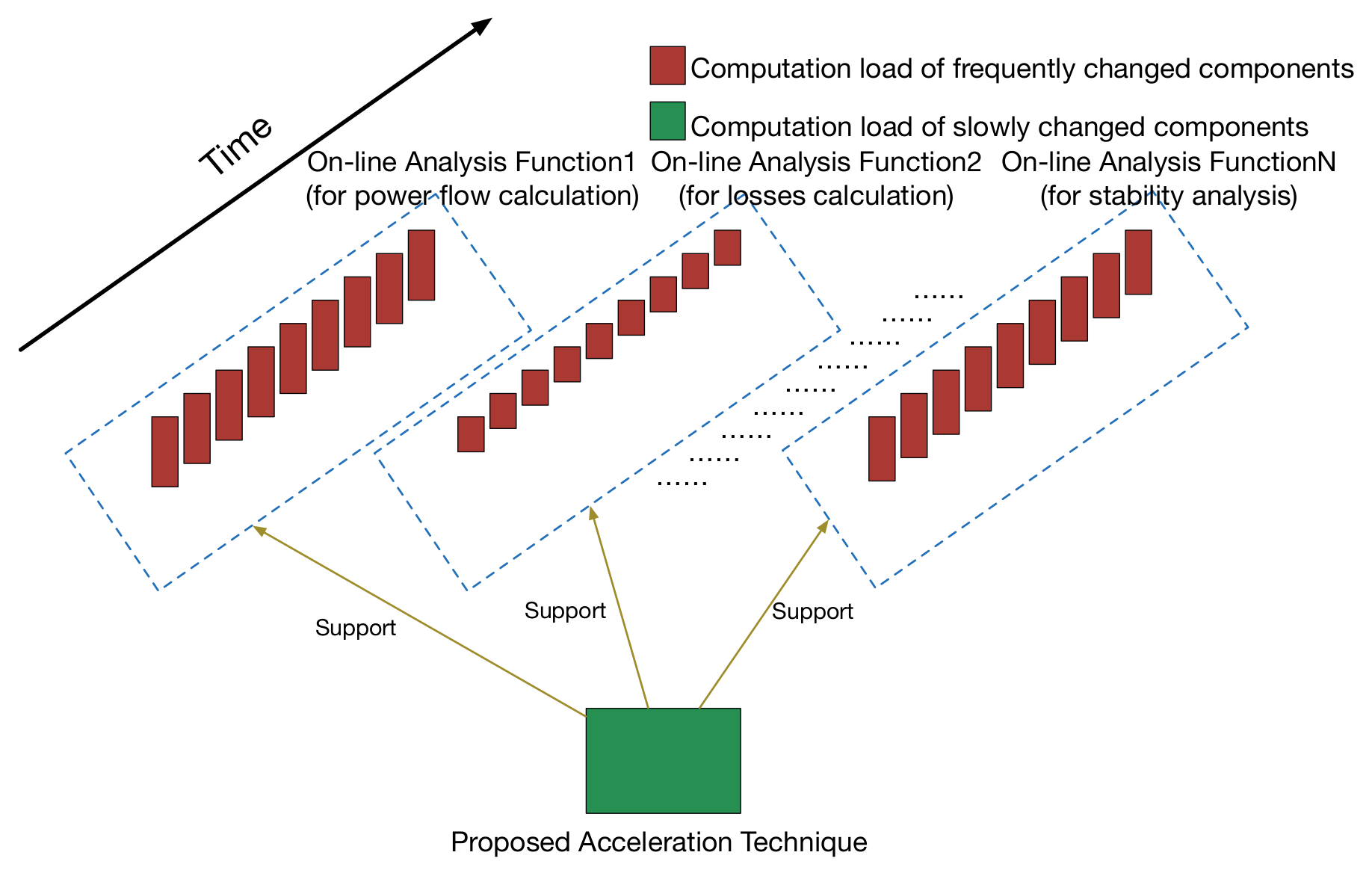

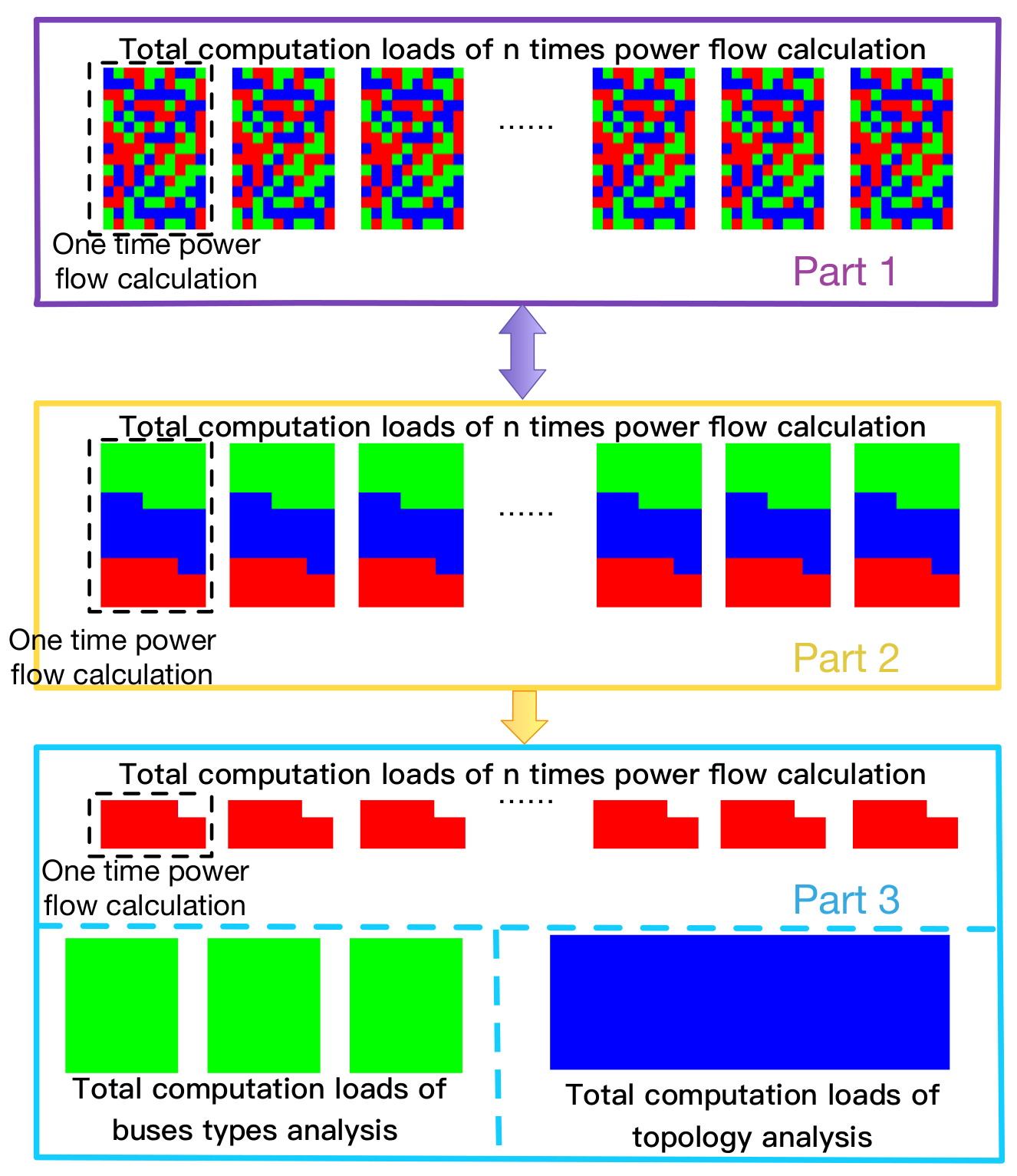

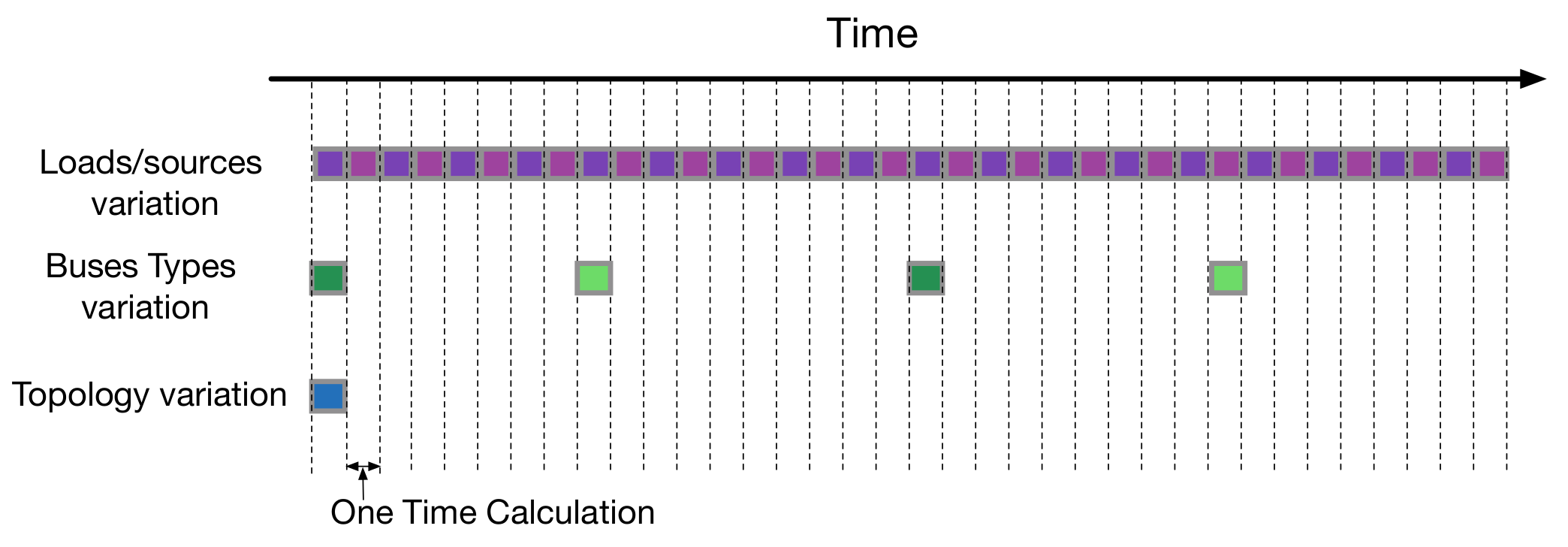
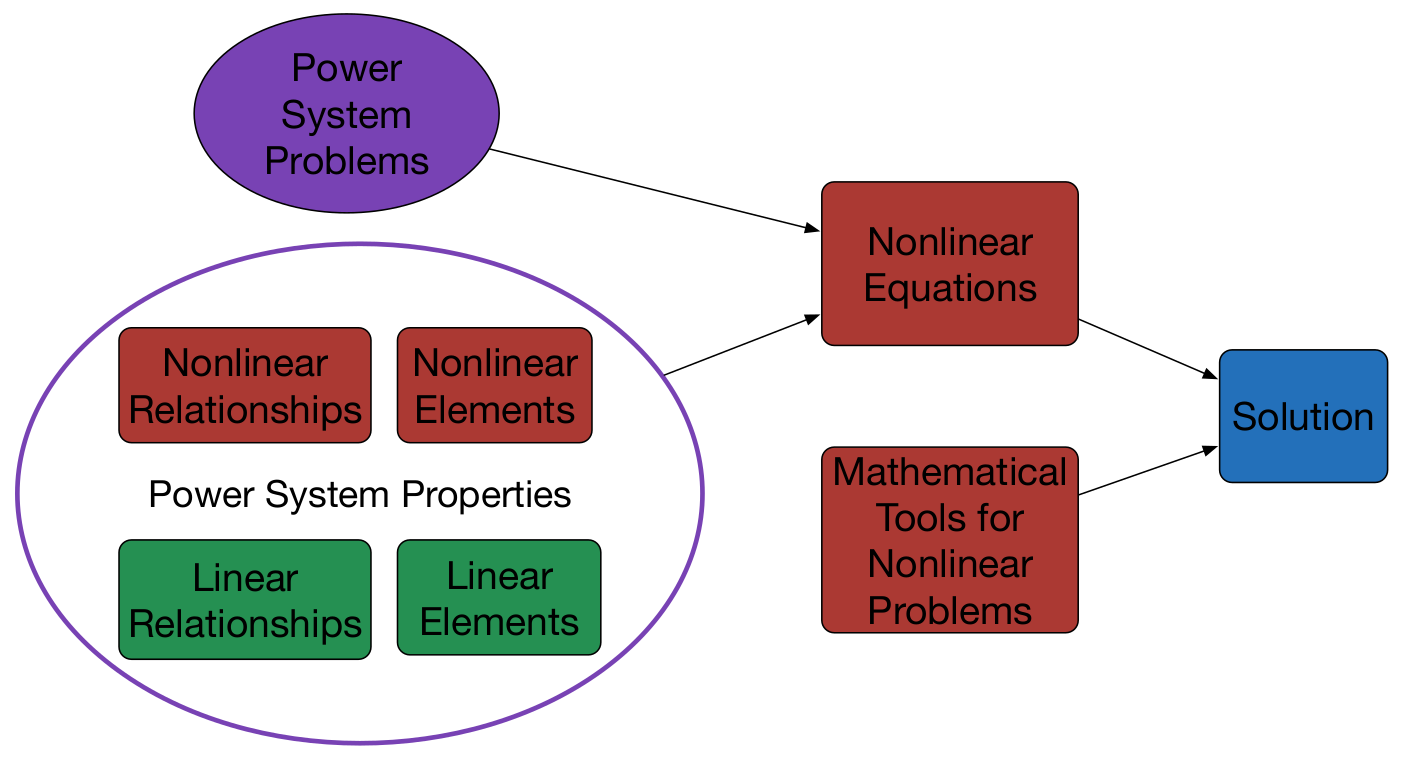
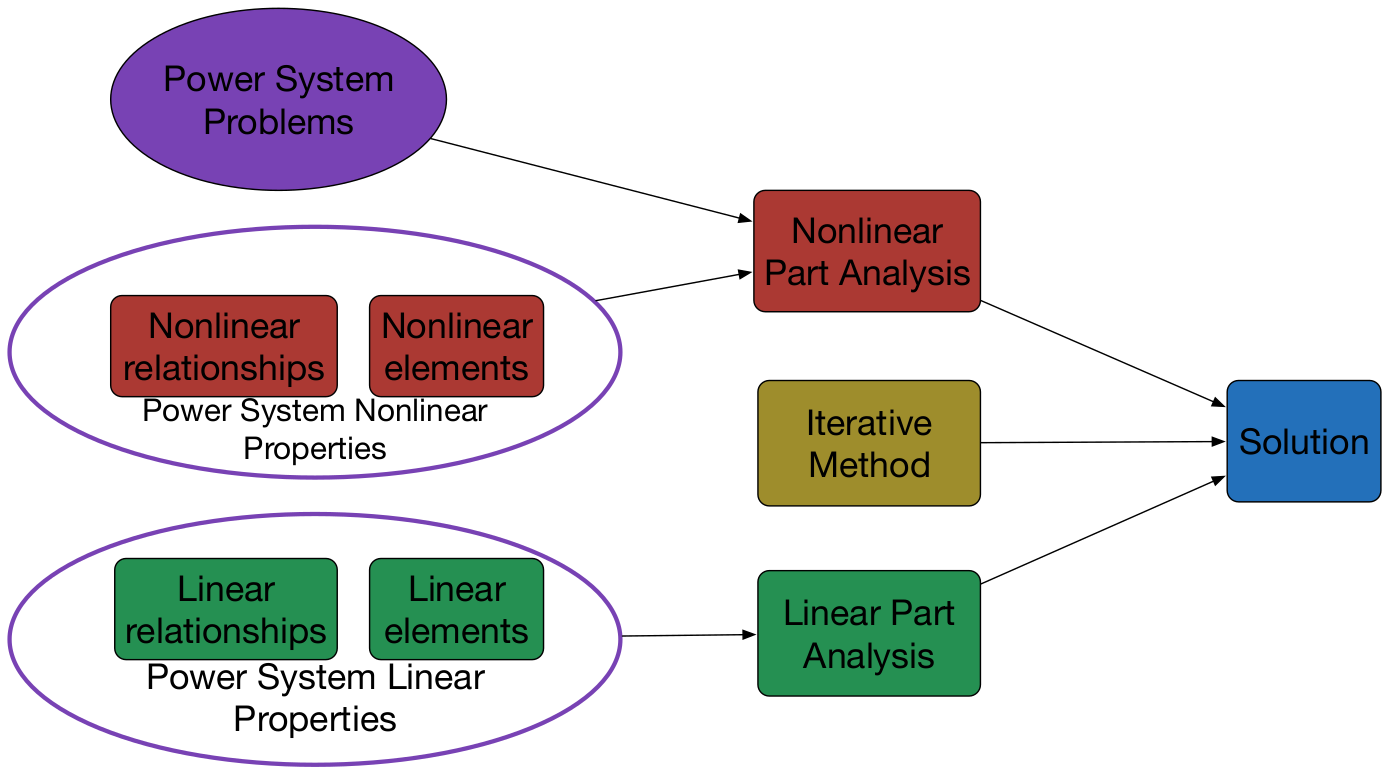


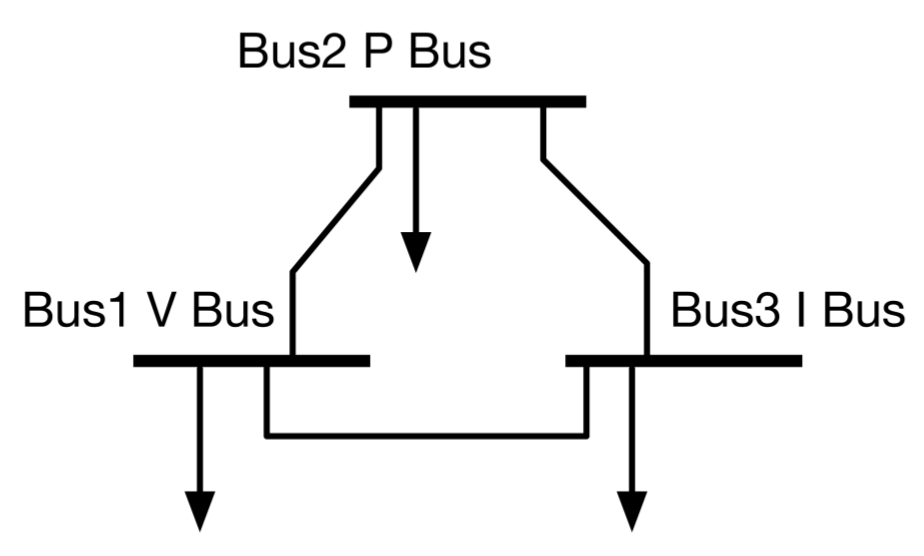




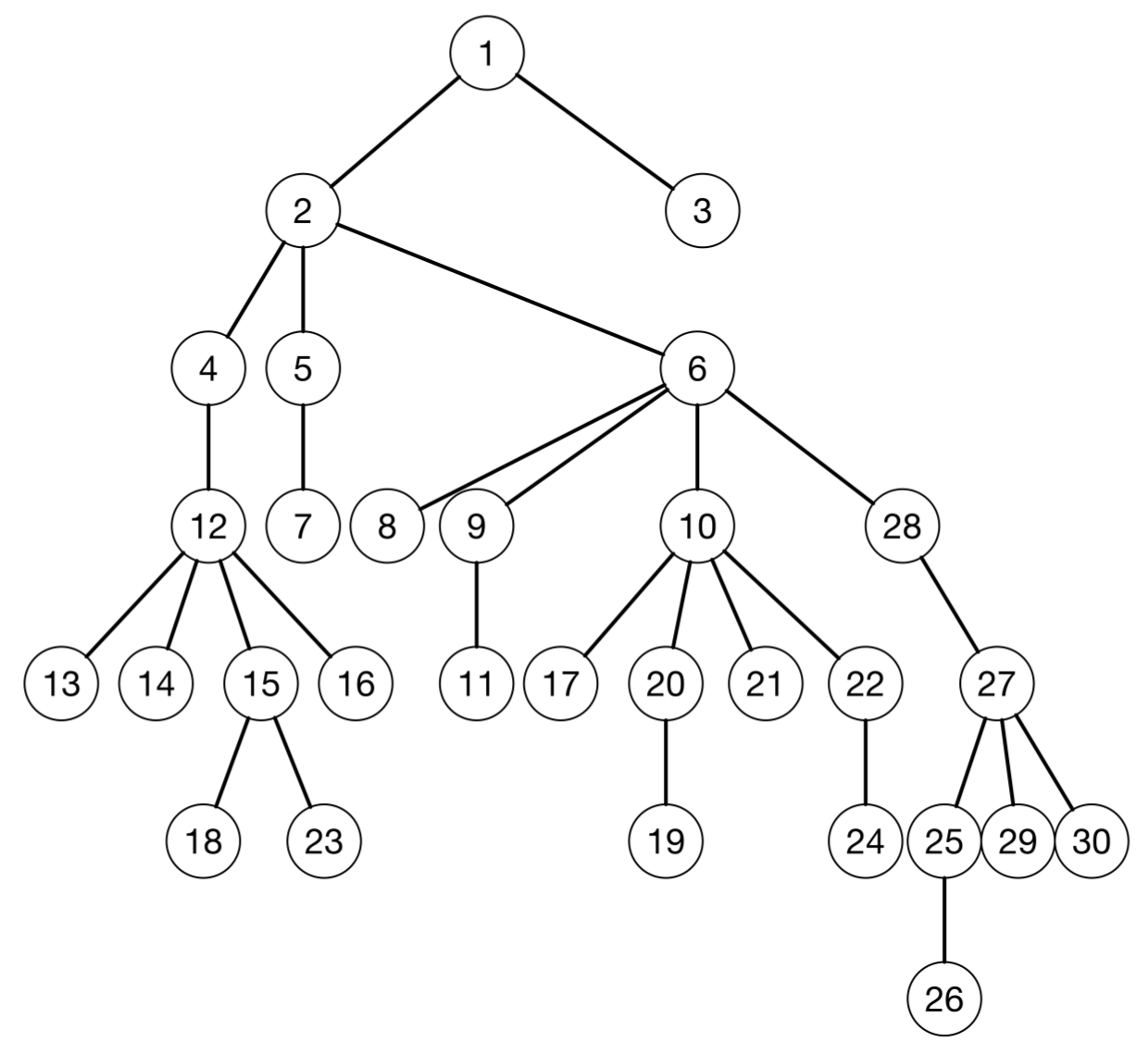
| 1 | 2 | 3 | 4 | 5 | 6 | 7 | 8 | 9 | 10 | 11 | 12 | 13 | |
|---|---|---|---|---|---|---|---|---|---|---|---|---|---|
| 1 | −0.8380 | −0.7465 | −0.6675 | −0.6106 | −0.6299 | −0.6573 | −0.6573 | −0.6519 | −0.6480 | −0.6391 | −0.6317 | −0.6330 | −0.6437 |
| 2 | −0.1620 | −0.2535 | −0.3325 | −0.3894 | −0.3701 | −0.3427 | −0.3427 | −0.3481 | −0.3520 | −0.3609 | −0.3683 | −0.3670 | −0.3563 |
| 3 | 0.0273 | −0.5320 | −0.1514 | −0.1031 | −0.1195 | −0.1427 | −0.1427 | −0.1382 | −0.1348 | −0.1273 | −0.1210 | −0.1221 | −0.1311 |
| 4 | 0.0572 | −0.1434 | −0.3168 | −0.2157 | −0.2501 | −0.2987 | −0.2987 | −0.2891 | −0.2822 | −0.2664 | −0.2532 | −0.2556 | −0.2745 |
| 5 | 0.0774 | −0.0711 | −0.1994 | −0.2918 | −0.2604 | −0.2159 | −0.2159 | −0.2246 | −0.2310 | −0.2454 | −0.2575 | −0.2553 | −0.2381 |
| 6 | 0.0273 | 0.4680 | −0.1514 | −0.1031 | −0.1195 | −0.1427 | −0.1427 | −0.1382 | −0.1348 | −0.1273 | −0.1210 | −0.1221 | −0.1311 |
| 7 | 0.0800 | 0.3071 | 0.5033 | −0.3016 | −0.0279 | 0.3589 | 0.3589 | 0.2830 | 0.2278 | 0.1021 | −0.0034 | 0.0158 | 0.1662 |
| 8 | 0.0029 | 0.0111 | 0.0182 | −0.0109 | −0.2171 | −0.6342 | −0.6342 | −0.4513 | −0.4097 | −0.3151 | −0.2356 | −0.2501 | −0.3633 |
| 9 | 0.0017 | 0.0064 | 0.0104 | −0.0062 | −0.1246 | −0.1661 | −0.1661 | −0.2590 | −0.2351 | −0.1808 | −0.1352 | −0.1435 | −0.2085 |
| 10 | −0.0045 | −0.0174 | −0.0286 | 0.0171 | −0.6584 | −0.1997 | −0.1997 | −0.2897 | −0.3552 | −0.5041 | −0.6292 | −0.6065 | −0.4282 |
| 11 | −0.0027 | −0.0105 | −0.0172 | 0.0103 | 0.2057 | −0.1202 | −0.1202 | −0.1744 | −0.2846 | −0.5350 | 0.1757 | 0.1522 | −0.0316 |
| 12 | −0.0004 | −0.0015 | −0.0025 | 0.0015 | 0.0302 | −0.0177 | −0.0177 | −0.0256 | −0.0157 | 0.0069 | −0.5201 | −0.1687 | −0.0882 |
| 13 | −0.0014 | −0.0054 | −0.0088 | 0.0053 | 0.1057 | −0.0618 | −0.0618 | −0.0896 | −0.0549 | 0.0240 | −0.2849 | −0.5900 | −0.3084 |
| 14 | 0.0000 | 0.0000 | 0.0000 | 0.0000 | 0.0000 | 0.0000 | −1.0000 | 0.0000 | 0.0000 | 0.0000 | 0.0000 | 0.0000 | 0.0000 |
| 15 | 0.0029 | 0.0111 | 0.0182 | −0.0109 | −0.2171 | 0.3658 | 0.3658 | −0.4513 | −0.4097 | −0.3151 | −0.2356 | −0.2501 | −0.3633 |
| 16 | 0.0027 | 0.0105 | 0.0172 | −0.0103 | −0.2057 | 0.1202 | 0.1202 | 0.1744 | −0.7154 | −0.4650 | −0.1757 | −0.1522 | 0.0316 |
| 17 | 0.0018 | 0.0069 | 0.0114 | −0.0068 | −0.1359 | 0.0794 | 0.0794 | 0.1152 | 0.0706 | −0.0308 | −0.1951 | −0.2413 | −0.6034 |
| 18 | 0.0027 | 0.0105 | 0.0172 | −0.0103 | −0.2057 | 0.1202 | 0.1202 | 0.1744 | 0.2846 | −0.4650 | −0.1757 | −0.1522 | 0.0316 |
| 19 | −0.0004 | −0.0015 | −0.0025 | 0.0015 | 0.0302 | −0.0177 | −0.0177 | −0.0256 | −0.0157 | 0.0069 | 0.4799 | −0.1687 | −0.0882 |
| 20 | −0.0018 | −0.0069 | −0.0114 | 0.0068 | 0.1359 | −0.0794 | −0.0794 | −0.1152 | −0.0706 | 0.0308 | 0.1951 | 0.2413 | −0.3966 |
| 1 | 2 | 3 | 4 | 5 | 6 | 7 | 8 | 9 | 10 | 11 | 12 | 13 | |
|---|---|---|---|---|---|---|---|---|---|---|---|---|---|
| 1 | −0.0496 | −0.0442 | −0.0395 | −0.0361 | −0.0373 | −0.0389 | −0.0389 | −0.0386 | −0.0383 | −0.0378 | −0.0374 | −0.0375 | −0.0381 |
| 2 | −0.0442 | −0.1495 | −0.0695 | −0.0565 | −0.0609 | −0.0671 | −0.0671 | −0.0659 | −0.0650 | −0.0630 | −0.0613 | −0.0616 | −0.0640 |
| 3 | −0.0395 | −0.0695 | −0.0954 | −0.0742 | −0.0814 | −0.0916 | −0.0916 | −0.0896 | −0.0881 | −0.0848 | −0.0820 | −0.0825 | −0.0865 |
| 4 | −0.0361 | −0.0565 | −0.0742 | −0.0869 | −0.0825 | −0.0764 | −0.0764 | −0.0776 | −0.0785 | −0.0805 | −0.0822 | −0.0819 | −0.0795 |
| 5 | −0.0373 | −0.0609 | −0.0814 | −0.0825 | −0.2485 | −0.1268 | −0.1268 | −0.1506 | −0.1680 | −0.2075 | −0.2407 | −0.2347 | −0.1874 |
| 6 | −0.0389 | −0.0671 | −0.0916 | −0.0764 | −0.1268 | −0.2242 | −0.2242 | −0.1839 | −0.1738 | −0.1507 | −0.1313 | −0.1348 | −0.1625 |
| 7 | −0.0389 | −0.0671 | −0.0916 | −0.0764 | −0.1268 | −0.2242 | −0.4003 | −0.1839 | −0.1738 | −0.1507 | −0.1313 | −0.1348 | −0.1625 |
| 8 | −0.0386 | −0.0659 | −0.0896 | −0.0776 | −0.1506 | −0.1839 | −0.1839 | −0.2336 | −0.2188 | −0.1853 | −0.1572 | −0.1623 | −0.2024 |
| 9 | −0.0383 | −0.0650 | −0.0881 | −0.0785 | −0.1680 | −0.1738 | −0.1738 | −0.2188 | −0.2793 | −0.2246 | −0.1720 | −0.1752 | −0.1998 |
| 10 | −0.0378 | −0.0630 | −0.0848 | −0.0805 | −0.2075 | −0.1507 | −0.1507 | −0.1853 | −0.2246 | −0.3140 | −0.2058 | −0.2044 | −0.1937 |
| 11 | −0.0374 | −0.0613 | −0.0820 | −0.0822 | −0.2407 | −0.1313 | −0.1313 | −0.1572 | −0.1720 | −0.2058 | −0.3738 | −0.2778 | −0.2099 |
| 12 | −0.0375 | −0.0616 | −0.0825 | −0.0819 | −0.2347 | −0.1348 | −0.1348 | −0.1623 | −0.1752 | −0.2044 | −0.2778 | −0.3116 | −0.2276 |
| 13 | −0.0381 | −0.0640 | −0.0865 | −0.0795 | −0.1874 | −0.1625 | −0.1625 | −0.2024 | −0.1998 | −0.1937 | −0.2099 | −0.2276 | −0.3656 |
| 1 | 2 | 3 | 4 | 5 | 6 | 7 | 8 | 9 | |
|---|---|---|---|---|---|---|---|---|---|
| 1 | 0.3669 | −0.3962 | 0.1573 | 0.1453 | 0.1195 | 0.0608 | 0.0115 | 0.0205 | 0.0907 |
| 2 | 0.1128 | 0.0706 | −0.2981 | −0.1743 | −0.1433 | −0.0729 | −0.0138 | −0.0245 | −0.1088 |
| 3 | 0.0448 | 0.0281 | −0.0631 | −0.1593 | −0.1310 | −0.0666 | −0.0126 | −0.0224 | −0.0995 |
| 4 | 0.1025 | 0.1687 | 0.0440 | 0.0406 | 0.0334 | 0.0170 | 0.0032 | 0.0057 | 0.0253 |
| 5 | −0.0344 | −0.0215 | −0.1111 | −0.2207 | −0.3592 | −0.6740 | −0.0174 | −0.0311 | −0.1378 |
| 6 | −0.0051 | −0.0032 | −0.0163 | −0.0324 | −0.0267 | −0.0136 | −0.5484 | −0.1956 | −0.1038 |
| 7 | −0.0177 | −0.0111 | −0.0571 | −0.1134 | −0.0933 | −0.0474 | −0.3841 | −0.6842 | −0.3630 |
| 8 | 0.1005 | 0.0629 | 0.4544 | 0.2998 | 0.2465 | 0.1254 | 0.0237 | 0.0422 | 0.1872 |
| 9 | 0.0123 | 0.0077 | 0.2475 | −0.4741 | −0.3898 | −0.1983 | −0.0375 | −0.0667 | −0.2960 |
| 10 | 0.0344 | 0.0215 | 0.1111 | 0.2207 | −0.6408 | −0.3260 | 0.0174 | 0.0311 | 0.1378 |
| 11 | 0.0227 | 0.0142 | 0.0734 | 0.1458 | 0.1199 | 0.0610 | −0.0675 | −0.1202 | −0.5333 |
| 12 | 0.0344 | 0.0215 | 0.1111 | 0.2207 | 0.3592 | −0.3260 | 0.0174 | 0.0311 | 0.1378 |
| 13 | −0.0051 | −0.0032 | −0.0163 | −0.0324 | −0.0267 | −0.0136 | 0.4516 | −0.1956 | −0.1038 |
| 14 | −0.0227 | −0.0142 | −0.0734 | −0.1458 | −0.1199 | −0.0610 | 0.0675 | 0.1202 | −0.4667 |
| 1 | 2 | 3 | 4 | 5 | 6 | 7 | 8 | 9 | |
|---|---|---|---|---|---|---|---|---|---|
| 1 | 0.0000 | 0.0000 | 0.0000 | 0.0000 | 0.0000 | 0.0000 | 0.0000 | 0.0000 | 0.0000 |
| 2 | 0.0000 | 0.0000 | 0.0000 | 0.0000 | 0.0000 | 0.0000 | 0.0000 | 0.0000 | 0.0000 |
| 3 | −0.0413 | −0.0258 | −0.0177 | −0.0164 | −0.0134 | −0.0068 | −0.0013 | −0.0023 | −0.0102 |
| 4 | −0.0258 | −0.0425 | −0.0111 | −0.0102 | −0.0084 | −0.0043 | −0.0008 | −0.0014 | −0.0064 |
| 5 | 0.0000 | 0.0000 | 0.0000 | 0.0000 | 0.0000 | 0.0000 | 0.0000 | 0.0000 | 0.0000 |
| 6 | −0.0177 | −0.0111 | −0.0800 | −0.0528 | −0.0434 | −0.0221 | −0.0042 | −0.0074 | −0.0330 |
| 7 | 0.0000 | 0.0000 | 0.0000 | 0.0000 | 0.0000 | 0.0000 | 0.0000 | 0.0000 | 0.0000 |
| 8 | −0.0164 | −0.0102 | −0.0528 | −0.1050 | −0.0863 | −0.0439 | −0.0083 | −0.0148 | −0.0655 |
| 9 | −0.0134 | −0.0084 | −0.0434 | −0.0863 | −0.1405 | −0.0715 | −0.0068 | −0.0121 | −0.0539 |
| 10 | −0.0068 | −0.0043 | −0.0221 | −0.0439 | −0.0715 | −0.1341 | −0.0035 | −0.0062 | −0.0274 |
| 11 | −0.0013 | −0.0008 | −0.0042 | −0.0083 | −0.0068 | −0.0035 | −0.1403 | −0.0500 | −0.0265 |
| 12 | −0.0023 | −0.0014 | −0.0074 | −0.0148 | −0.0121 | −0.0062 | −0.0500 | −0.0891 | −0.0473 |
| 13 | −0.0102 | −0.0064 | −0.0330 | −0.0655 | −0.0539 | −0.0274 | −0.0265 | −0.0473 | −0.2097 |
| 1 | 0.2535 | 0.0150 |
| 2 | 0.0425 | 0.0500 |
| 3 | 0.1768 | 0.0132 |
| 4 | −0.0102 | 0.0095 |
| 5 | −0.0317 | −0.0100 |
| 6 | −0.2152 | −0.0083 |
| 7 | −0.0881 | −0.0300 |
| 8 | −0.1027 | −0.0060 |
| 9 | −0.0345 | −0.0067 |
| 10 | −0.0773 | −0.0083 |
| 11 | 0.0084 | −0.0097 |
| 12 | 0.0012 | −0.0094 |
| 13 | 0.0043 | −0.0075 |
| 14 | −0.1233 | - |
| 15 | 0.0206 | - |
| 16 | −0.0084 | - |
| 17 | −0.0055 | - |
| 18 | −0.0084 | - |
| 19 | 0.0012 | - |
| 20 | 0.0055 | - |
| Line | Newton Method | Topology Separation | Buses Types Separation |
|---|---|---|---|
| 1 | 0.25350684468481 | 0.25350684468693 | 0.25350684468481 |
| 2 | 0.34171461636364 | 0.34171461636478 | 0.34171461636414 |
| 3 | 0.17679446380765 | 0.17679446380819 | 0.17679446380765 |
| 4 | 0.53923167081852 | 0.53923167081961 | 0.53923167081938 |
| 5 | 0.35205905241400 | 0.35205905241475 | 0.35205905241465 |
| 6 | 0.35126777874479 | 0.35126777874530 | 0.35126777874569 |
| 7 | −0.80411541593387 | −0.80411541593531 | −0.80411541593479 |
| 8 | 0.01533113318128 | 0.01533113318117 | 0.01533113318090 |
| 9 | 0.16968716980752 | 0.16968716980739 | 0.16968716980731 |
| 10 | −0.34209994458276 | −0.34209994458297 | −0.34209994458320 |
| 11 | 0.57015340375823 | 0.57015340375882 | 0.57015340375880 |
| 12 | 0.29128015861995 | 0.29128015861975 | 0.29128015861975 |
| 13 | 0.73685125815450 | 0.73685125815460 | 0.73685125815459 |
| 14 | −0.81341683093722 | −0.81341683093724 | −0.81341683093762 |
| 15 | 0.82874796411849 | 0.82874796411805 | 0.82874796411816 |
| 16 | −0.14939008574679 | −0.14939008574677 | −0.14939008574676 |
| 17 | 0.11339815651291 | 0.11339815651279 | 0.11339815651280 |
| 18 | −0.46038925417374 | −0.46038925417335 | −0.46038925417333 |
| 19 | 0.10745065050639 | 0.10745065050670 | 0.10745065050670 |
| 20 | 0.42849525446940 | 0.42849525446939 | 0.42849525446938 |
| Bus | Newton Method | Topology Separation | Buses Types Separation |
|---|---|---|---|
| 1 | 0.01500000000000 | 0.01500000000013 | 0.01500000000000 |
| 2 | 0.05000000000000 | 0.05000000000023 | 0.05000000000000 |
| 3 | 0.11007732819872 | 0.11007732819904 | 0.11007732819887 |
| 4 | 0.07621602803375 | 0.07621602803400 | 0.07621602803386 |
| 5 | −0.01000000000000 | −0.00999999999980 | −0.01000000000000 |
| 6 | 0.11328337476959 | 0.11328337476988 | 0.11328337476966 |
| 7 | −0.03000000000000 | −0.02999999999971 | −0.03000000000000 |
| 8 | 0.20445393830227 | 0.20445393830251 | 0.20445393830230 |
| 9 | 0.19183047605666 | 0.19183047605691 | 0.19183047605670 |
| 10 | 0.10340351200751 | 0.10340351200783 | 0.10340351200763 |
| 11 | 0.06451237737657 | 0.06451237737672 | 0.06451237737652 |
| 12 | 0.08598961339979 | 0.08598961340000 | 0.08598961339980 |
| 13 | 0.23511453186023 | 0.23511453186044 | 0.23511453186023 |
© 2018 by the authors. Licensee MDPI, Basel, Switzerland. This article is an open access article distributed under the terms and conditions of the Creative Commons Attribution (CC BY) license (http://creativecommons.org/licenses/by/4.0/).
Share and Cite
Xu, Q.; Wang, Y.; Cao, M.; Zheng, J. A Novel Technique to Improve the Online Calculation Performance of Nonlinear Problems in DC Power Systems. Electronics 2018, 7, 115. https://doi.org/10.3390/electronics7070115
Xu Q, Wang Y, Cao M, Zheng J. A Novel Technique to Improve the Online Calculation Performance of Nonlinear Problems in DC Power Systems. Electronics. 2018; 7(7):115. https://doi.org/10.3390/electronics7070115
Chicago/Turabian StyleXu, Qingshan, Yuqi Wang, Minjian Cao, and Jiaqi Zheng. 2018. "A Novel Technique to Improve the Online Calculation Performance of Nonlinear Problems in DC Power Systems" Electronics 7, no. 7: 115. https://doi.org/10.3390/electronics7070115





